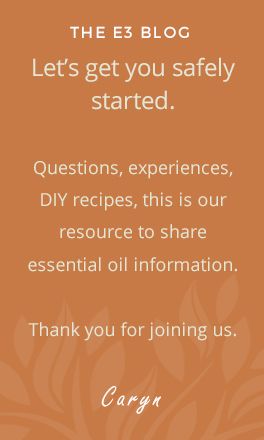No products in the cart.
Community Partners, Outdoor & Active Life Style, Seasonal
How to Benefit from Lavender — Nature’s Stress Relief
By Caryn Gehlmann
 I feel so fortunate to live here in Southern Oregon where lavender thrives! Everywhere you look there is lavender growing. Every summer, I get to teach classes at a local lavender farm, and it’s amazing how many people say how any tension or anxiety they have when they first arrive, just melts away after a few minutes of being near those aromatic lavender fields! So this month’s Just for the Smell of It post is dedicated to how we can benefit from lavender.
I feel so fortunate to live here in Southern Oregon where lavender thrives! Everywhere you look there is lavender growing. Every summer, I get to teach classes at a local lavender farm, and it’s amazing how many people say how any tension or anxiety they have when they first arrive, just melts away after a few minutes of being near those aromatic lavender fields! So this month’s Just for the Smell of It post is dedicated to how we can benefit from lavender.
But don’t worry, I’ll also share some tips if lavender isn’t your go-to scent.
#1 — The science behind how lavender helps you de-stress
One of the most important aspects of aromatherapy is that it is a good tool to help maintain and support emotional and physical balance. And in the aromatherapy world, lavender is a superstar in this regard. That’s because lavender affects the parasympathetic nervous system. It can help your body get to a neutral state which involves lowering the heart rate, adrenaline levels, and slowing the breath.
Unfortunately, because of the stresses of our modern world, many of us spend too much time relying on our sympathetic nervous system, which gets your body ready for intense physical activity, often referred to as the “fight-or-flight” response. On the other hand, the parasympathetic nervous system relaxes your body and inhibits or slows high-energy functions. It’s more of a “rest and digest” response.
 Research is showing how lavender can reduce anxiety by helping you slide on over to the parasympathetic nervous system. Why do many people consider lavender calming? According to 2017 research and other studies, lavender aromatherapy is thought to calm anxiety by impacting the limbic system, the part of the brain that controls emotions. The aromatic compound, Linalool, and its ester form, linalyl acetate 2, are lavender oil’s main constituents. Linalool has an effect on the serotonin receptor. It helps treat conditions such as anxiety and depression and can help to combat insomnia.
Research is showing how lavender can reduce anxiety by helping you slide on over to the parasympathetic nervous system. Why do many people consider lavender calming? According to 2017 research and other studies, lavender aromatherapy is thought to calm anxiety by impacting the limbic system, the part of the brain that controls emotions. The aromatic compound, Linalool, and its ester form, linalyl acetate 2, are lavender oil’s main constituents. Linalool has an effect on the serotonin receptor. It helps treat conditions such as anxiety and depression and can help to combat insomnia.
There are many ways to benefit from lavender that doesn’t involve putting your face in a lavender bush! And with lavender essential oils, you can benefit all year long! You can apply it to your skin with a roll-on, in your diffuser, an aromatherapy inhaler, or in the bath or shower! However, if you’re feeling particularly “stressed out,” I encourage you to use it in conjunction with the breathing exercise I explain in this blog, Health Benefits of Diaphragmatic Breathing.
#2 — Answering your top 3 lavender questions
I love answering your questions and so here are the top three questions I hear about lavender along with my answers.
Q – Lavender is not one of my favorite smells, are there any other oils that may have a calming effect that Lavender does?
We’ve already talked about the calming effects of linalool. Linalool is found in the essential oils of over 200 plant species so the good news is there are options besides lavender that are calming. Since your sense of smell is intricately linked to emotion and memory centers in the brain, you want to find a scent that you find pleasant! Bergamot would be my first recommendation, as most people enjoy its pleasant citrus scent. Other options include: Melissa, Basil ct. linalool, Thyme ct. linalool, Mandarin, Neroli, Coriander, Clary Sage, Cardamom, Chamomile Roman, Petitgrain.
Q – Can I use Lavender directly on bug bites?
 Yes, most people can apply a small amount of lavender essential oil directly to their skin for a bug bite. Use a Q-tip to apply 1 drop of essential oil directly to the bite. However, if your skin is sensitive, mix 1-4 drops of essential oil in 1 teaspoon of aloe vera or carrier oil and apply to the area in need.
Yes, most people can apply a small amount of lavender essential oil directly to their skin for a bug bite. Use a Q-tip to apply 1 drop of essential oil directly to the bite. However, if your skin is sensitive, mix 1-4 drops of essential oil in 1 teaspoon of aloe vera or carrier oil and apply to the area in need.
Q – What is the best way to use Lavender Hydrosol for pets?
A good first step when using a hydrosol with your pet is to spray a small amount on a cloth and let the animal smell it. Pay close attention to how they respond, if they run away, take that as a no and maybe try later. If they like it, they’ll usually let you know by rubbing up against it or licking the air or their mouth. Find three other suggestions here, Hydrosols for Pets — The Safest Aromatherapy Option.
#3 — Learn more about lavender and aromatherapy blending
 One of the best ways to benefit from lavender is to see it grow and make something from it yourself. I’ll be teaching classes this summer at Lavender Fields Forever. It will be a wonderful time to get outdoors and connect with each other in peaceful surroundings. Look at the Events section on Facebook for classes I’ll be teaching or visit their website for the details on how to sign up. On July 30, 2021, I’ll be teaching, The Art of Blending: Create your own aromatherapy blend with lavender & other essential oils. I’ll share the many ways you can use lavender and then the real fun begins as I guide you through the creation of your own unique essential oil blend with lavender as the base. You’ll be able to take your new blend with you to enjoy all the uplifting properties of lavender wherever and whenever you want.
One of the best ways to benefit from lavender is to see it grow and make something from it yourself. I’ll be teaching classes this summer at Lavender Fields Forever. It will be a wonderful time to get outdoors and connect with each other in peaceful surroundings. Look at the Events section on Facebook for classes I’ll be teaching or visit their website for the details on how to sign up. On July 30, 2021, I’ll be teaching, The Art of Blending: Create your own aromatherapy blend with lavender & other essential oils. I’ll share the many ways you can use lavender and then the real fun begins as I guide you through the creation of your own unique essential oil blend with lavender as the base. You’ll be able to take your new blend with you to enjoy all the uplifting properties of lavender wherever and whenever you want.
I’ve recently begun sharing more detailed blending secrets in my DIY posts. Make sure you’re signed up to receive those monthly DIY emails and download my workbook, The Art & Science of Blending Essential Oils.








